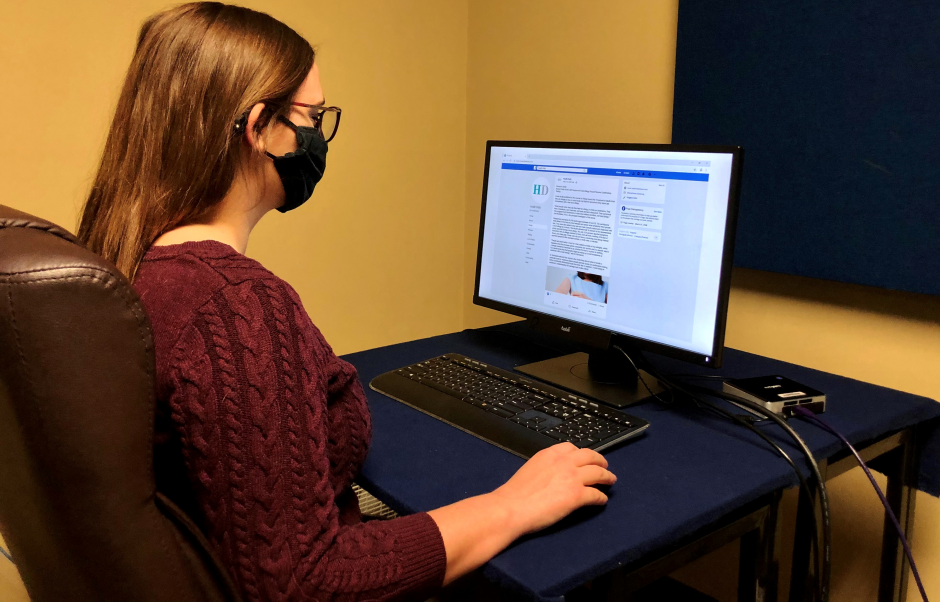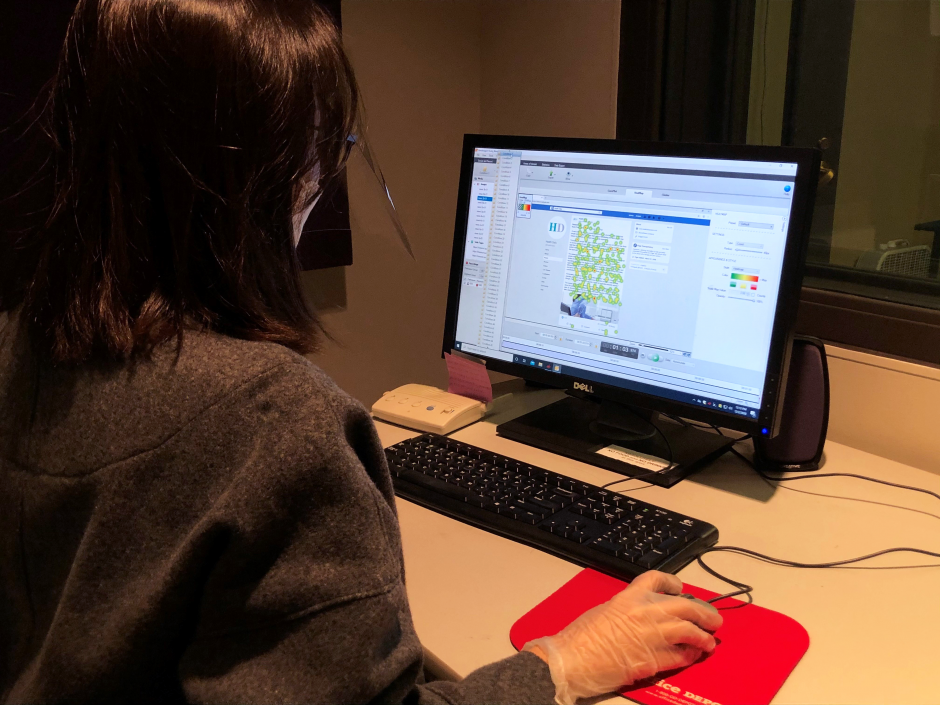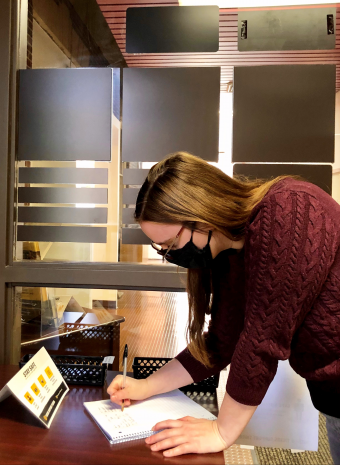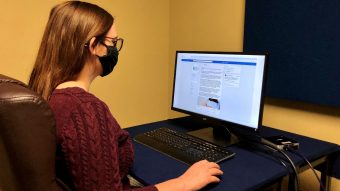
Dec. 3, 2020
Inside the University of Missouri’s Psychological Research on Information and Media Effects, or PRIME, lab, researchers recently resumed studying how people process media messaging by measuring participants’ eye movement after temporarily stopping their in-person research earlier this year due to the COVID-19 pandemic.
“If you think about how people understand the news, it seems like a simple task, but it's actually very complicated,” said Sungkyoung Lee, an associate professor in the School of Journalism and director of the PRIME lab. “We’re interested in researching not just how journalists can effectively communicate with readers, but also what resonates with their audiences.”

Housed in the School of Journalism, the lab is one of only six media effect research labs in the country that is equipped to gather such data. Researchers measure a person’s cognitive and bodily responses in real-time, including heart function and eye movement. Using this data, they can gauge what piques a reader’s interest and help journalists determine what language, images and other types of content grab the attention of audiences.

Namyeon Lee is pursuing a doctorate at the School of Journalism while working as a graduate assistant in the lab. She’s interested in the development and evaluation of effective media messaging, including in the areas of science-, risk-, and health-related communication.
She said the lab’s goal is to understand an audience’s cognitive and emotional response to media and news information. One of the lab’s recent research studies looks to increase the public's understanding and engagement of science news.
“Not many schools in the U.S. have this kind of media psychology lab,” Lee said. “I examine how different types of messaging can influence the audience’s cognitive and behavioral responses, and how the impact can differ based on an individual’s characteristics. In one of our recent studies, we wanted to help the public more easily understand and engage in scientific information they read in the news.”
Now, at least an hour is scheduled between study participants in order to give researchers adequate time to sanitize the lab’s equipment. In addition, researchers record participants’ body temperatures upon entry, and face coverings are required. The researchers also wear gloves while working in the lab.
Research conducted by the PRIME lab has been presented at several major communication and journalism conferences, including the International Communication Association, Association for Education in Journalism and Mass Communication, and the Society for Psychophysiological Research.
